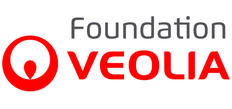Stéphanie Doualan, a laboratory technician with Veolia Franciliane, spent two weeks in Mayotte as a Veoliaforce volunteer. In particular, she operated the Veolia Foundation's mobile water purification stations alongside the French Red Cross. A mission like no other for this seasoned volunteer.
You were mobilized to Mayotte after an initial rotation of Veoliaforce experts, arriving three weeks after cyclone Chido. What was the context?
Stéphanie Doualan: When I arrived in Mayotte on January 8, the shock phase was over. The population was committed to the aftermath, to the reconstruction phase. I walk along streets that, from one day to the next, are cleared of the debris and corrugated iron that littered them the day before. Water points have been identified for the deployment of Aquaforces, mobile drinking water production stations. They need to be validated by analyzing the raw water to ensure that it can be treated. This is the first part of my mission, before switching to the operation of the Aquaforce deployed at M'Tsapere.
In this district of the capital, Grand Mamoudzou, an Aquaforce 2000 has been installed at the top of a river...
SD: ...to supply the surrounding population. We see a lot of children coming to fetch water. And you have to admit that making dirty water drinkable is quite magical! Our only fear is that the flow of the river - from which we draw the water for treatment - will diminish day by day. But then we find solutions, we adapt. Here, we coordinated with Solidarités International, another NGO partner of the Foundation, to bring in water produced when the river dried up.
Was Mayotte a first for you?
SD: Yes. What's quite shocking is the sheer size of the bangas. Before Chido hit, all you could see was the forest on the hills. The cyclone laid bare all the shantytowns, ripping away all the vegetation that masked them, revealing a sea of corrugated iron sheets, as if the fire had passed that way.
You've already carried out humanitarian missions, as a volunteer for the French Red Cross in Greece, and as a Veoliaforce volunteer for the Veolia Foundation in Haiti. How was this mission different?
SD: Mayotte is France. You can sometimes feel a bit of inertia in public decision-making, and at the same time, there are a lot of people there to help. On my small scale, each day ended with a debriefing with the teams dedicated to water issues (WASH), a debriefing with the ERU (Emergency Response Teams) of the French Red Cross, and even a debriefing with the volunteers. What was also very new for me was the intervention schedule. In Haiti, where I was assigned by the Veolia Foundation to support Médecins Sans Frontières, the intervention was not a post-disaster emergency. It was a development project, to improve what already existed. And I worked in total autonomy. In Mayotte, I had to serve a fairly large organization and find ways of being as useful as possible.





